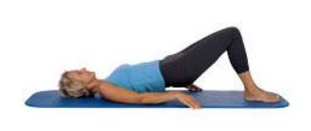Lage Rugpijn
Inleiding / Introduction
| Inleiding | Introduction |
|---|---|
|
Als je ooit rugpijn hebt gehad, dan weet je ongetwijfeld dat sommige oefeningen helpen om de rug ‘gezond’ te houden en te sterken tegen overbelasting.
|
If you have ever had back pain, you will no doubt know that some exercises help keep the back "healthy" and strengthened against overload.
|
Rugoefeningen / Back exercises
| Rugoefeningen | Back exercises |
|---|---|
|
In oefeningen voor de rug onderscheiden we verschillende categorieën. Zo zijn er:
Het is nooit goed om met deze laatste categorie te beginnen.
|
We distinguish different categories in exercises for the back. For example, there are:
It is never good to start with this last category.
|
Mobilisatie / Mobilization
Stabilisatie / Stabilization
Versterkend / Fortifying
| Spierversterkende oefeningen | Fortifying exercises |
|---|---|
|
Als de stabiliteit van de rug in orde is en je de oefeningen onder lage belasting zonder problemen kunt uitvoeren, dan ben je klaar voor het zwaardere werk.
|
If the stability of the back is in order and you can perform the exercises without any problems under low load, then you are ready for the heavier work.
|
Zie ook
- https://www.audiofysio.nl/gratis-oefensessie, AudioFysio gratis oefensessies uit Silvie's lage rugpijn app.
Referentie
- ↑ 1.0 1.1 Equilli.com, Overbelaste rug voorkomen beste oefeningen (EN: Avoid strained back best exercises).

